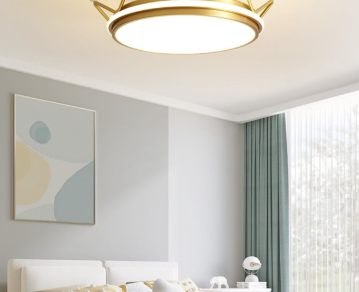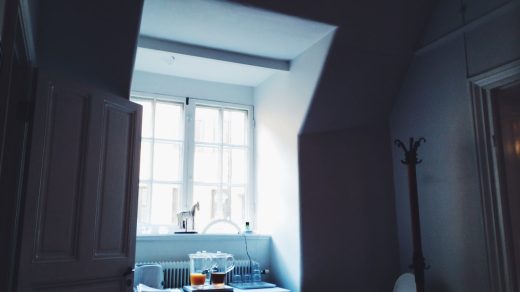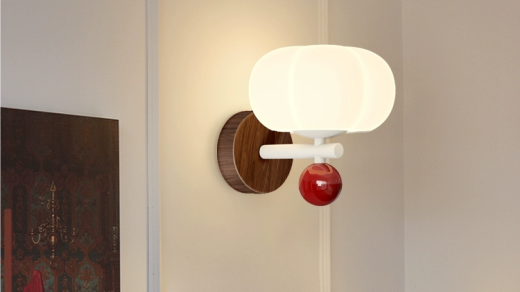Illuminate Your Kitchen with Hanging Lights
Kitchen lighting is an essential aspect of any kitchen design. It not only provides illumination for cooking and food preparation but also sets the mood and enhances the overall aesthetic appeal of the space. One popular option for kitchen lighting is hanging lights. Hanging lights, also known as pendant lights or chandeliers, are fixtures that are suspended from the ceiling and provide focused lighting in specific areas of the kitchen.
Factors to Consider When Choosing Hanging Lights for Your Kitchen
When choosing hanging lights for your kitchen, there are several factors to consider. First, you need to take into account the size and height of your kitchen. If you have a small kitchen with low ceilings, you may want to opt for smaller pendant lights or mini lights that won’t overwhelm the space. On the other hand, if you have a large kitchen with high ceilings, you can go for larger chandeliers or island lights that make a statement.
The style and design of your kitchen should also be taken into consideration when choosing hanging lights. If you have a modern or contemporary kitchen, sleek and minimalist pendant lights or drum lights would be a great choice. For a more traditional or rustic kitchen, chandeliers with ornate details or island lights with farmhouse-inspired designs would be more fitting.
Another important factor to consider is the type of lighting Vvvov needed in your kitchen. Pendant lights provide focused task lighting, making them ideal for illuminating specific areas such as the kitchen island or dining table. Chandeliers, on the other hand, provide ambient lighting and can be used to create a warm and inviting atmosphere in the entire kitchen.
Budget considerations are also important when choosing hanging lights for your kitchen. Pendant lights and mini lights tend to be more affordable options, while chandeliers and island lights can be more expensive. It’s important to set a budget and stick to it when shopping for hanging lights.
Types of Hanging Lights for Kitchen Illumination
There are several types of hanging lights that can be used for kitchen illumination. Pendant lights are a popular choice and come in a variety of styles, sizes, and materials. They can be hung individually or in a group to create a focal point in the kitchen. Chandeliers are another option and are often used in larger kitchens or dining areas. They come in various designs, from traditional crystal chandeliers to modern and industrial styles.
Island lights are specifically designed to be hung over kitchen islands or countertops. They provide focused lighting for food preparation and can also serve as a decorative element in the kitchen. Drum lights are another type of hanging light that features a drum-shaped shade. They provide diffused lighting and can be used to create a soft and cozy ambiance in the kitchen. Lastly, mini lights are small pendant lights that are often used in clusters or rows to create a dramatic effect.
How to Install Hanging Lights in Your Kitchen
Installing hanging lights in your kitchen can be a DIY project if you have some basic electrical knowledge and skills. However, if you’re not comfortable working with electricity, it’s best to hire a professional electrician to do the installation for you. Here is a step-by-step guide to installing hanging lights in your kitchen:
1. Turn off the power: Before starting any electrical work, make sure to turn off the power to the area where you will be installing the hanging lights. This can be done by flipping the corresponding circuit breaker in your electrical panel.
2. Measure and mark: Measure the height at which you want to hang the lights and mark the spot on the ceiling. Use a stud finder to locate any ceiling joists or beams that you can attach the light fixture to.
3. Install the mounting bracket: Attach the mounting bracket to the ceiling using screws or bolts, making sure it is securely fastened.
4. Connect the wiring: Follow the manufacturer’s instructions to connect the wiring of the hanging light fixture to the electrical wiring in your ceiling. Make sure to match the corresponding wires (black to black, white to white, and green or copper to the ground wire).
5. Secure the light fixture: Once the wiring is connected, attach the light fixture to the mounting bracket using screws or bolts. Make sure it is securely fastened and level.
6. Turn on the power: After double-checking all connections, turn on the power to the area and test the hanging lights to ensure they are working properly.
Safety precautions should always be taken during installation. Make sure to turn off the power before working with electrical wiring and use caution when handling tools and equipment. If you’re unsure about any aspect of the installation process, it’s best to consult a professional.
Benefits of Hanging Lights for Your Kitchen
Hanging lights offer several benefits for your kitchen. First and foremost, they provide improved visibility and functionality in the kitchen. Pendant lights and island lights can be strategically placed over work areas such as the kitchen island or countertops, providing focused task lighting for cooking and food preparation. This makes it easier to see what you’re doing and reduces the risk of accidents or injuries.
In addition to improved functionality, hanging lights also enhance the ambiance and mood in your kitchen. Chandeliers and drum lights, in particular, can create a warm and inviting atmosphere, making your kitchen a more enjoyable space for cooking, entertaining, and spending time with family and friends. The right choice of hanging lights can also serve as a decorative element in your kitchen, adding style and personality to the space.
Furthermore, installing hanging lights in your kitchen can increase the value of your home. Well-designed and properly installed lighting fixtures are often sought after by homebuyers and can make your kitchen more appealing when it comes time to sell. Hanging lights can give your kitchen a high-end and luxurious look, making it stand out from other homes on the market.
Enhancing Your Kitchen Décor with Hanging Lights

Choosing hanging lights that complement your kitchen décor is essential to create a cohesive and visually appealing space. Here are some tips for choosing hanging lights that enhance your kitchen décor:
1. Consider the style of your kitchen: Take into account the overall style and design of your kitchen when choosing hanging lights. If you have a modern or contemporary kitchen, opt for sleek and minimalist pendant lights or drum lights with clean lines and simple designs. For a more traditional or rustic kitchen, chandeliers with ornate details or island lights with farmhouse-inspired designs would be a better fit.
2. Coordinate with other fixtures: Make sure the finish and style of your hanging lights coordinate with other fixtures in your kitchen, such as cabinet hardware, faucets, and appliances. This will create a cohesive look and tie the different elements of your kitchen together.
3. Consider the size and scale: The size and scale of your hanging lights should be proportionate to the size of your kitchen and other elements in the space. If you have a small kitchen, opt for smaller pendant lights or mini lights that won’t overwhelm the space. On the other hand, if you have a large kitchen with high ceilings, you can go for larger chandeliers or island lights that make a statement.
4. Choose the right color temperature: Consider the color temperature of the light emitted by your hanging lights. Warm white light (around 2700-3000K) creates a cozy and inviting atmosphere, while cool white light (around 4000-5000K) provides a brighter and more energizing feel. Choose a color temperature that complements the overall mood and ambiance you want to create in your kitchen.
Incorporating hanging lights into your kitchen design can be done in creative ways. For example, instead of installing a single pendant light over the kitchen island, you can hang a row of mini lights or a linear chandelier for a more dramatic effect. You can also use hanging lights to highlight specific areas or features in your kitchen, such as a breakfast nook or a decorative backsplash.
Maintenance Tips for Hanging Lights in Your Kitchen
Proper maintenance is important to keep your hanging lights in good condition and ensure they continue to provide optimal lighting in your kitchen. Here are some maintenance tips for hanging lights:
1. Regular cleaning: Dust and dirt can accumulate on the surface of your hanging lights, affecting their brightness and appearance. Regularly clean your hanging lights using a soft cloth or duster to remove any dust or debris. For more stubborn stains or dirt, you can use a mild soap solution and a soft sponge or cloth.
2. Check for loose connections: Periodically check the connections between the light fixture and the mounting bracket to ensure they are secure. Loose connections can cause the light fixture to hang unevenly or sway, posing a safety hazard.
3. Replace burnt-out bulbs: If any of the bulbs in your hanging lights burn out, make sure to replace them promptly. Using burnt-out bulbs can affect the overall lighting quality in your kitchen and may also put strain on the remaining bulbs.
4. Inspect for damage: Regularly inspect your hanging lights for any signs of damage, such as cracks, chips, or loose parts. If you notice any damage, it’s best to have it repaired or replaced by a professional.
In addition to regular cleaning and maintenance, it’s important to troubleshoot common issues with hanging lights. If your hanging lights flicker, dim, or don’t turn on at all, there may be an issue with the wiring or electrical connections. In such cases, it’s best to consult a professional electrician to diagnose and fix the problem.
Energy-Efficient Hanging Lights for Your Kitchen
Energy-efficient hanging lights are a great option for your kitchen as they not only help reduce your energy consumption but also save you money on your utility bills. There are several energy-efficient lighting options available for your kitchen:
1. LED lights: LED (light-emitting diode) lights are highly energy-efficient and have a long lifespan. They use up to 80% less energy than traditional incandescent bulbs and can last up to 25 times longer. LED hanging lights are available in a variety of styles and designs, making them a versatile choice for any kitchen.
2. CFL lights: CFL (compact fluorescent lamp) lights are another energy-efficient option for your kitchen. They use about 75% less energy than incandescent bulbs and can last up to 10 times longer. CFL hanging lights are available in different shapes and sizes, including pendant lights and chandeliers.
3. Smart lighting systems: Smart lighting systems allow you to control the brightness and color temperature of your hanging lights using a smartphone or voice commands. They often come with energy-saving features such as motion sensors and timers, allowing you to customize the lighting in your kitchen and reduce energy waste.
Using energy-efficient hanging lights in your kitchen not only helps reduce your carbon footprint but also provides long-term cost savings. While energy-efficient lighting options may have a higher upfront cost, the savings on your energy bills over time make them a worthwhile investment.
Cost-Effective Hanging Lights for Your Kitchen
If you’re on a budget, there are several cost-effective hanging light options available for your kitchen. Here are some tips for saving money on hanging light installation and maintenance:
1. Shop for affordable options: Look for affordable hanging light options that fit within your budget. Pendant lights and mini lights tend to be more affordable compared to chandeliers or island lights. Consider shopping at discount stores or online retailers that offer competitive prices.
2. DIY installation: If you have some basic electrical knowledge and skills, you can save money by installing the hanging lights yourself. However, if you’re not comfortable working with electricity, it’s best to hire a professional electrician to do the installation for you.
3. Compare prices and get multiple quotes: Before making a purchase or hiring an electrician, compare prices from different suppliers or contractors. Getting multiple quotes will help you find the best deal and ensure you’re not overpaying for the hanging lights or installation services.
4. Opt for energy-efficient options: While energy-efficient hanging lights may have a higher upfront cost, they can save you money in the long run by reducing your energy consumption. Look for energy-efficient options such as LED or CFL lights that offer both cost savings and environmental benefits.
5. Proper maintenance: Regularly cleaning and maintaining your hanging lights can help extend their lifespan and prevent costly repairs or replacements. Follow the maintenance tips mentioned earlier to keep your hanging lights in good condition.
By being mindful of your budget and exploring cost-effective options, you can transform your kitchen with hanging lights without breaking the bank.
Transform Your Kitchen with Hanging Lights
Hanging lights are a popular option for kitchen lighting due to their functionality, aesthetic appeal, and versatility. By considering factors such as the size and height of your kitchen, the style and design of your kitchen, the type of lighting needed, and your budget, you can choose the right hanging lights that suit your needs and preferences.
Installing hanging lights in your kitchen can improve visibility and functionality, enhance ambiance and mood, and increase the value of your home. By choosing hanging lights that complement your kitchen décor and incorporating them creatively into your design, you can transform your kitchen into a stylish and inviting space.
Proper maintenance and troubleshooting of hanging lights are important to ensure they continue to provide optimal lighting in your kitchen. Energy-efficient hanging lights are a great option for reducing energy consumption and saving money on your utility bills. If you’re on a budget, there are cost-effective hanging light options available that can help you achieve the desired look without breaking the bank.
In conclusion, hanging lights offer a wide range of benefits and considerations for kitchen lighting. Whether you’re looking to improve functionality, enhance ambiance, or increase the value of your home, hanging lights can be a transformative addition to your kitchen. Take the time to explore different options, consider your specific needs and preferences, and transform your kitchen with hanging lights.
If you’re looking to enhance the ambiance of your kitchen, consider installing stylish hanging lights. These lights not only provide functional illumination but also add a touch of elegance to your space. In a recent article by ChenOne Home, they explore the art of kitchen cooking and how it goes beyond just preparing meals. They discuss the importance of creating a welcoming atmosphere in the kitchen and how lighting plays a crucial role in achieving this. To learn more about this topic, check out their article on the art of kitchen cooking.




